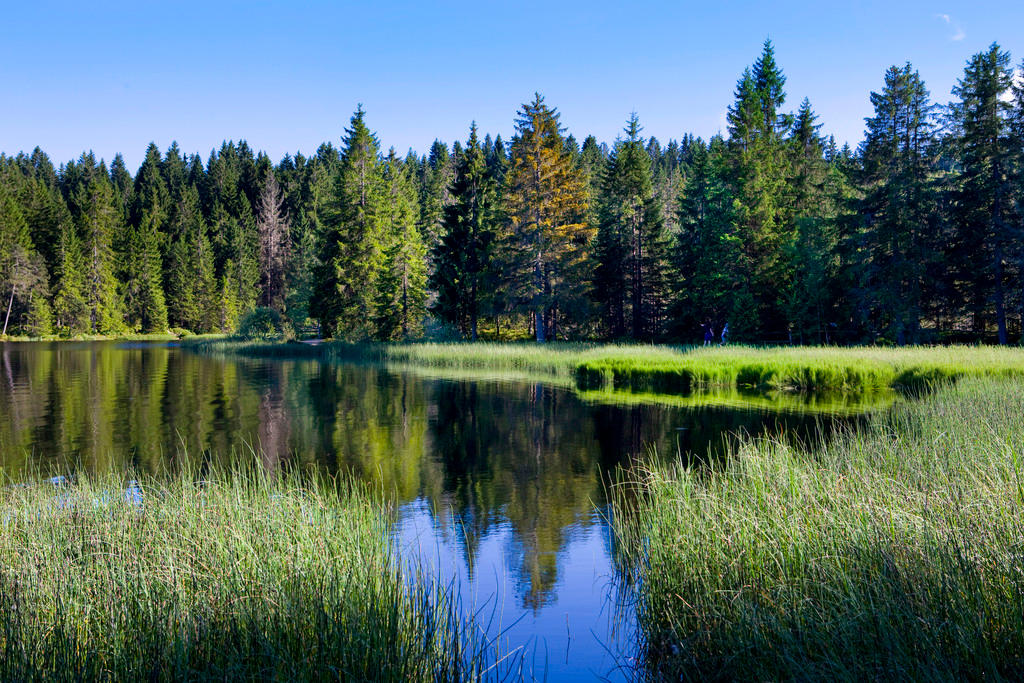
Reports sound alarm bells for Swiss biodiversity

Biological diversity in Switzerland faces alarming challenges, with more endangered animals and plants than in most other European countries, reports the country’s chief environmental agency.
An “unacceptable state”: this is how Franziska Schwarz, Vice Director of the Federal Office for the Environment (FOEN) describes the biodiversity situation in Switzerland, in a recently released reportExternal link from her agency.
Under current conditions, the report finds, almost half of all natural habitats and more than a third of animal and plant species in Switzerland face a threat of extinction. This is much more than in most EU countries.
Causes include the gradual disappearance of natural areas such as dry meadows and wetlands, essential for supporting certain organisms such as frogs. As these decline, more adaptable species replace them, resulting in more uniform habitats and species overall.
The main drivers of this, FOEN says, are “the intensive use of land and bodies of water, the spread of invasive alien species and atmospheric nitrogen inputs in the soil particularly from agricultural sources”.
Lasting problem
Despite their alarming tone, the findings are not new. Switzerland may enjoy a super-clean image, but its biodiversity record lags behind: in 2015, it placed dead last in a State of the Environment assessment published by the European Environment Agency.
The same year, a report by a group of scientists raised the alarm about the trend of dwindling biodiversity in Switzerland, driven by (among others) the destruction of meadows and pasture and the disappearance of nutrients in the air above moors.
The trends can lead to reduced human well-being, they said, as a diverse ecosystem is essential to carry out functions such as cleaning water or pollinating plants.
The FOEN report echoes these concerns: biodiversity “produces food, regulates the climate, preserves air and water quality, participates in soil formation and offers human beings a place of recreation and a source of inspiration”, it says.
Action time
The government adopted a Swiss Biodiversity Strategy in 2012 which outlines measures to try to combat the damage to biodiversity.
Agricultural subsidies were adapted as a result, with CHF387 million ($405 million) granted to farmers to promote biodiversity in 2014 and 2015 and CHF43 million pledged for the conservation of natural resources.
These measures helped increase land quality and reduce erosion, a review last year found.
Ahead of FOEN’s report, group of Swiss environmental NGOs released a separate studyExternal link showing similarly alarming predictions for biodiversity and calling for more concerted action at the political level.
The NGOs World Wildlife Fund Switzerland, BirdLife Switzerland and Pro Natura argued that only one of the 20 goals laid out in the Swiss Biodiversity Strategy has a chance of being achieved by the end of this decade.

In compliance with the JTI standards
More: SWI swissinfo.ch certified by the Journalism Trust Initiative




























You can find an overview of ongoing debates with our journalists here . Please join us!
If you want to start a conversation about a topic raised in this article or want to report factual errors, email us at english@swissinfo.ch.